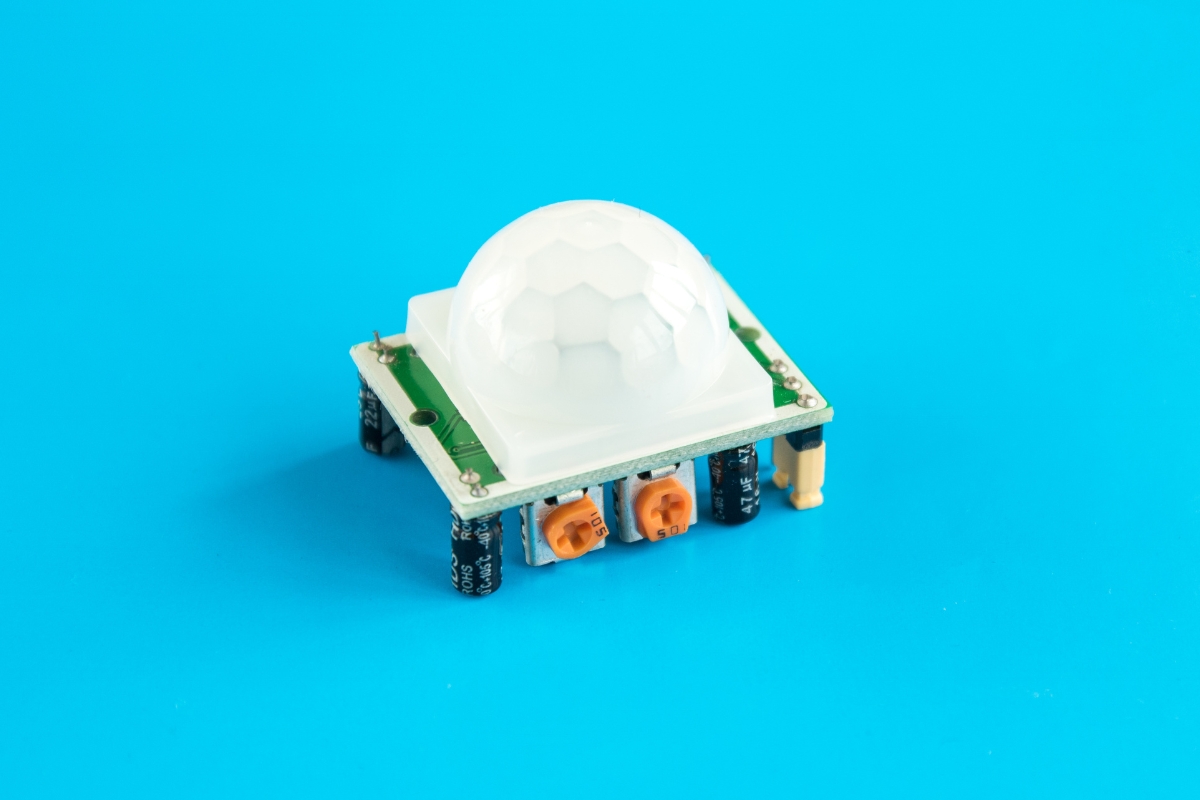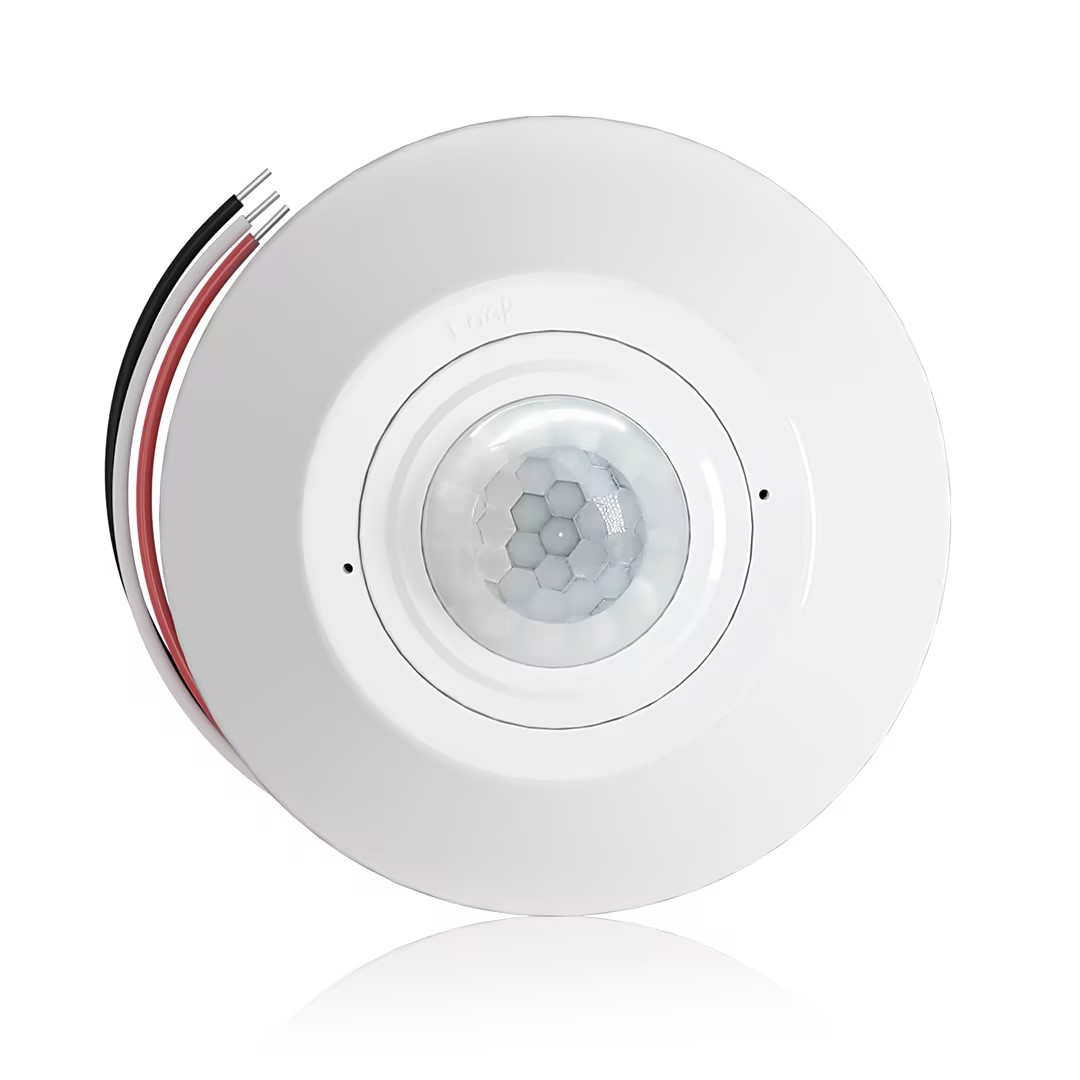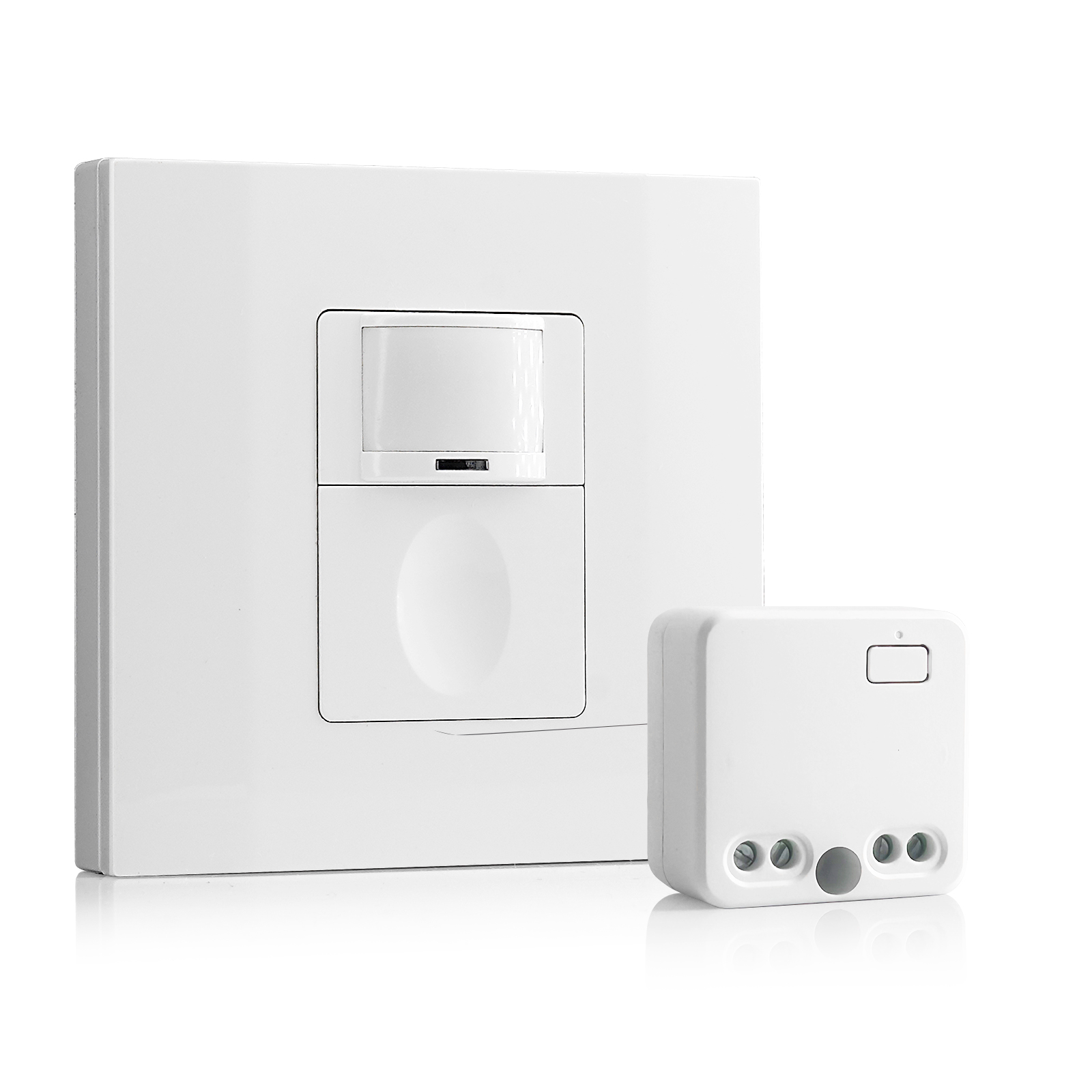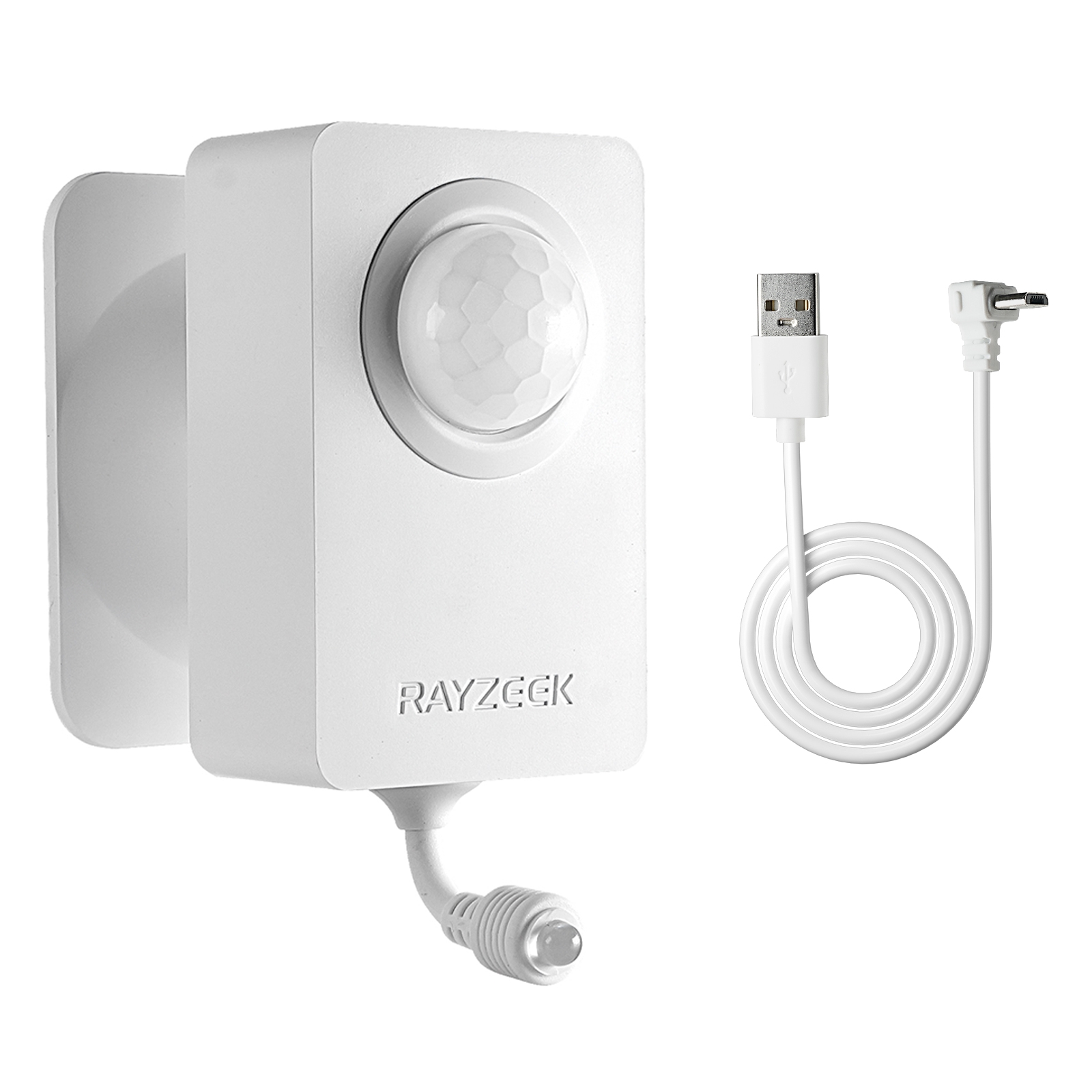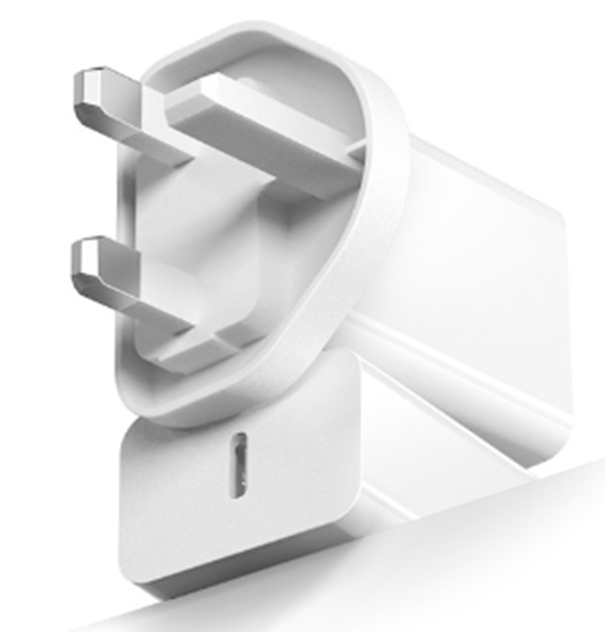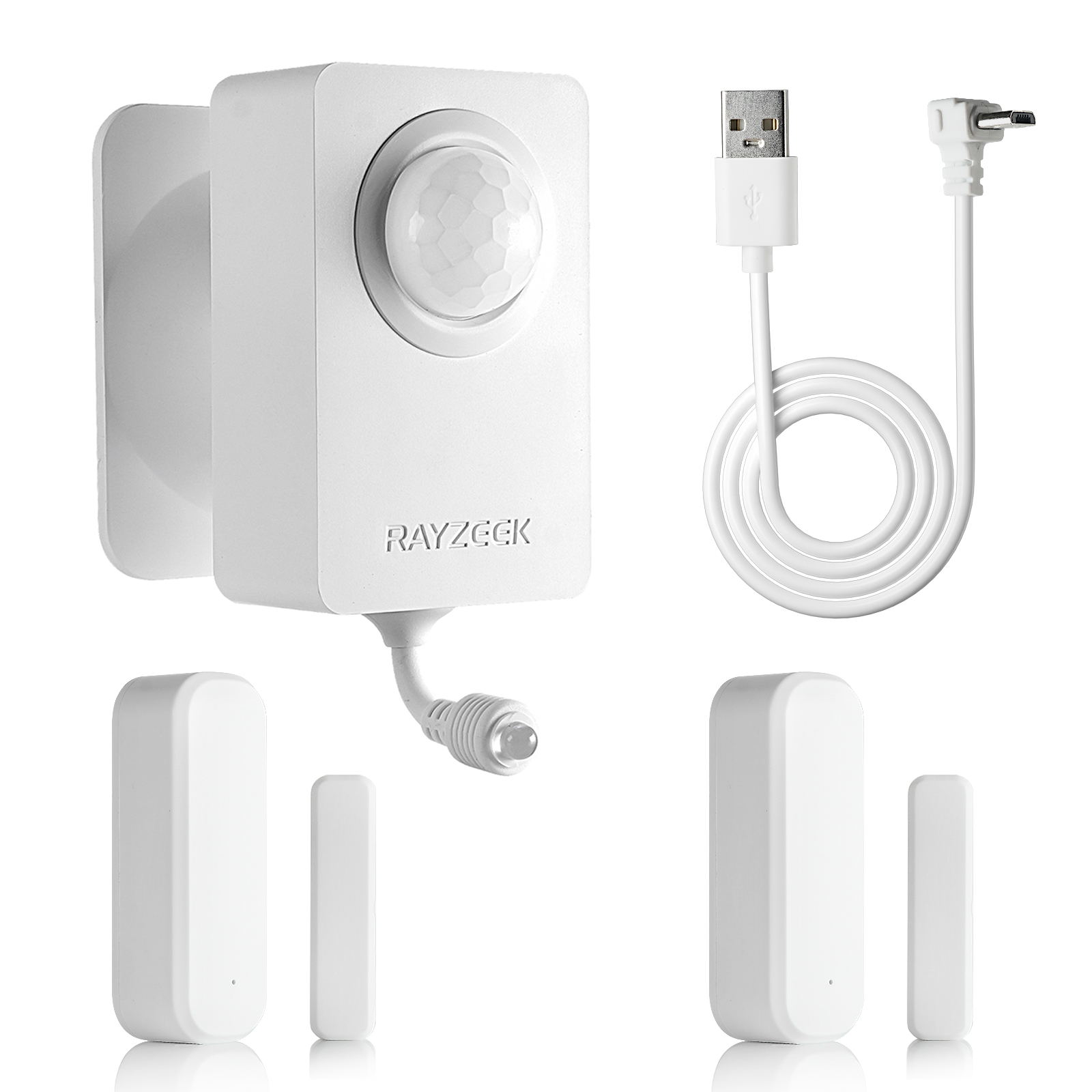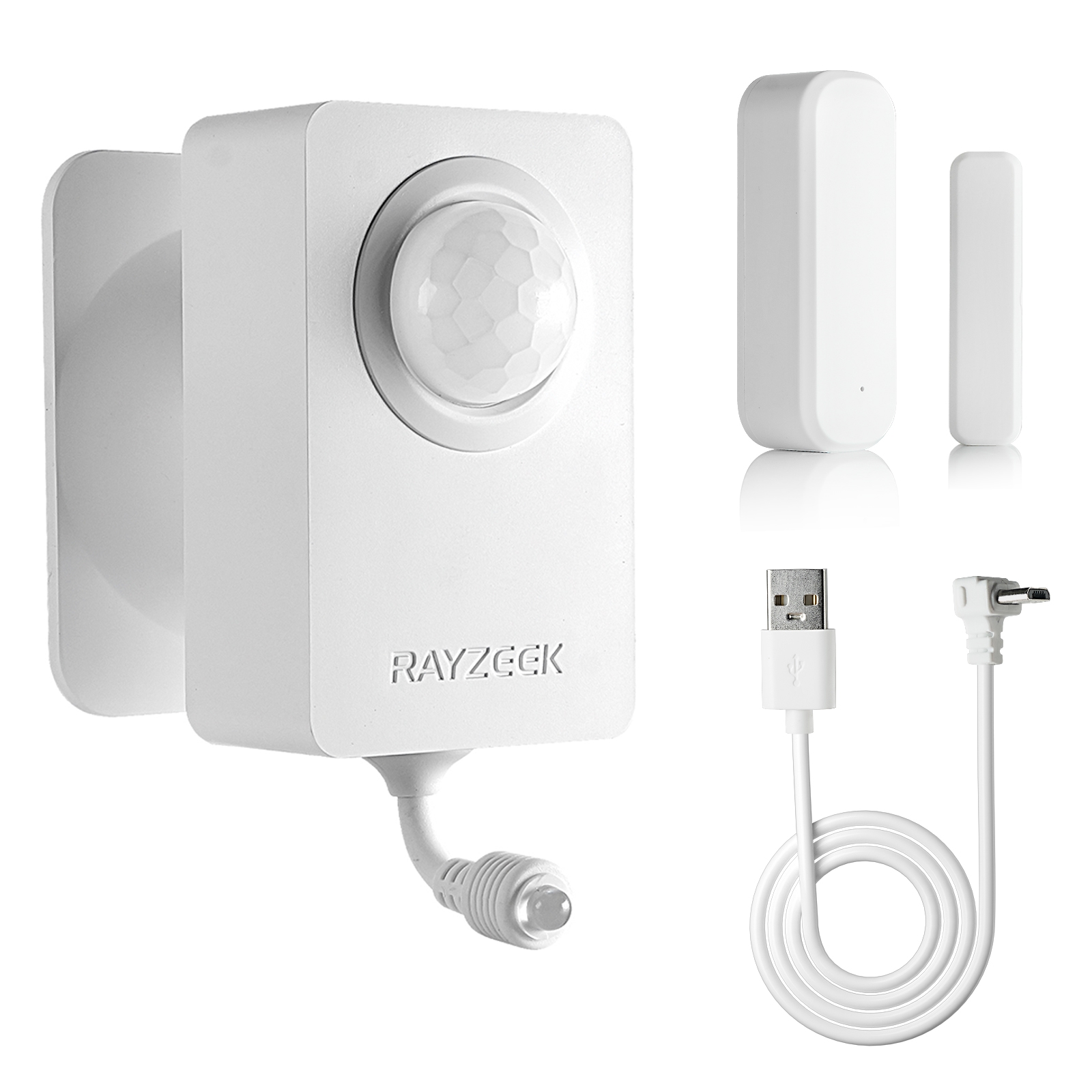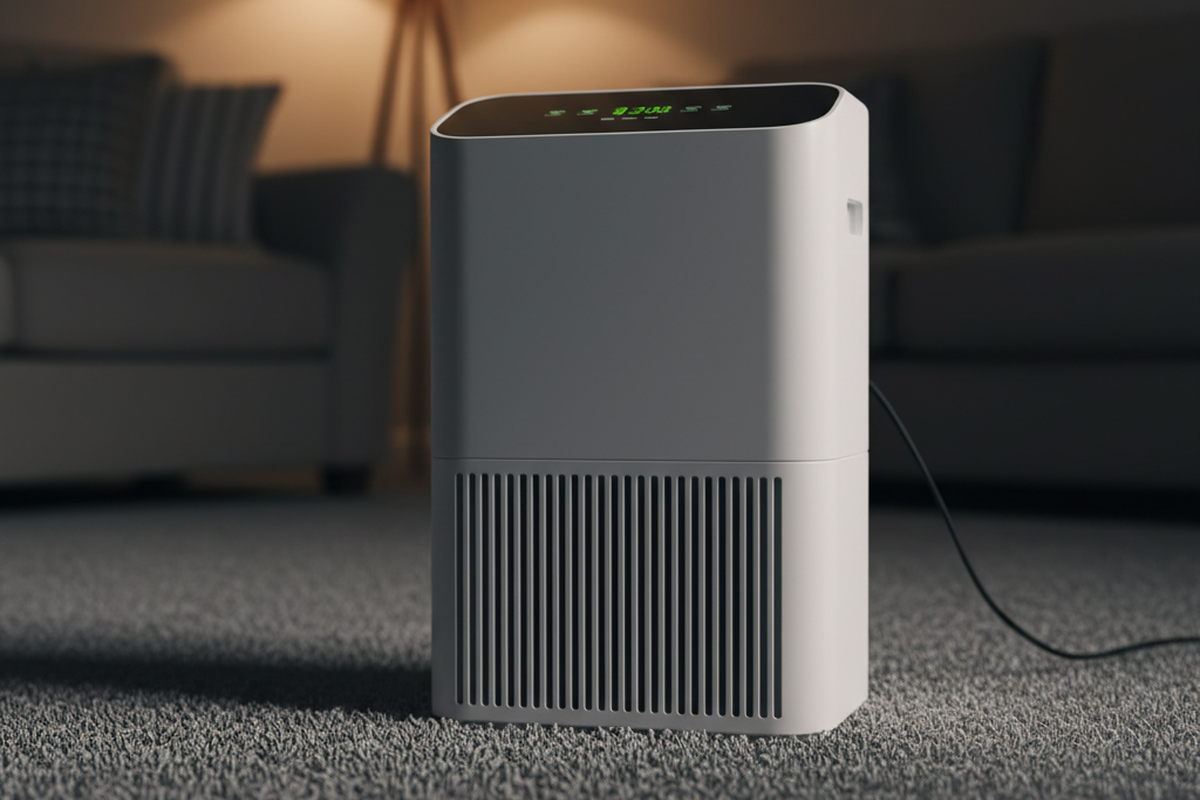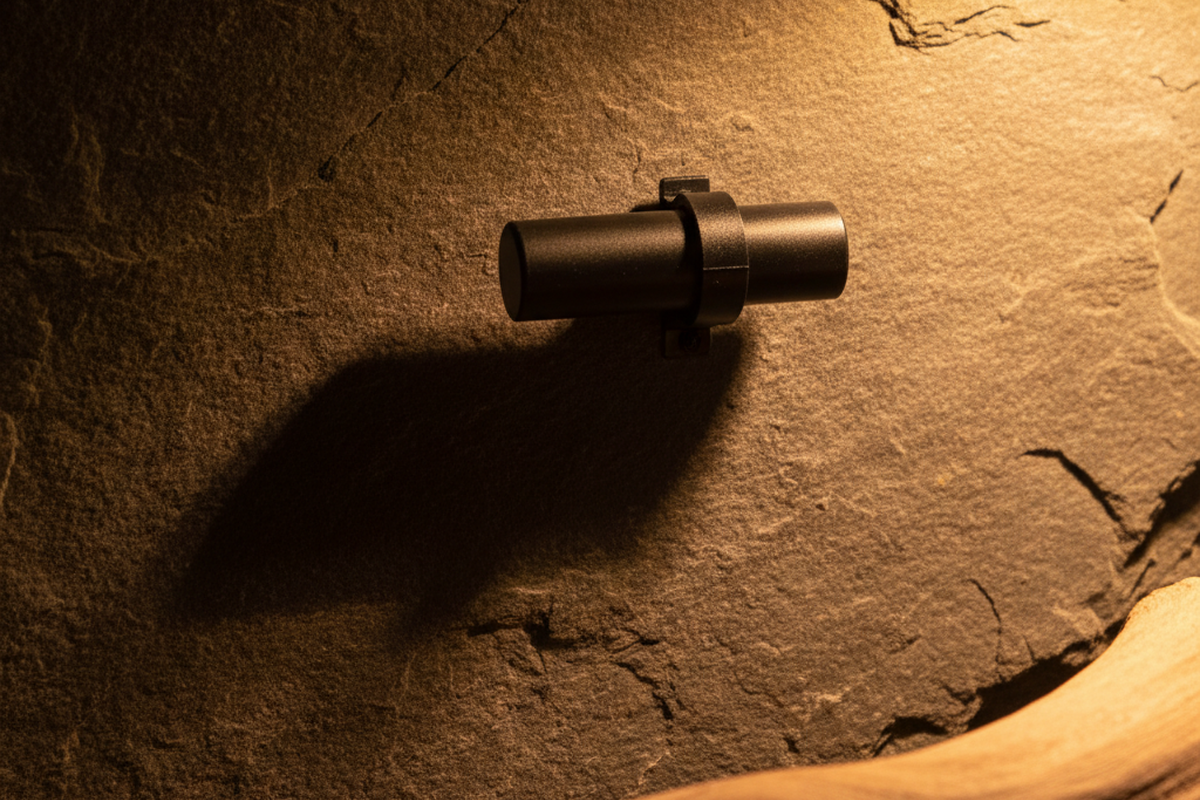Zajímá vás, jak se rozsvítí automatická světla, jakmile vstoupíte do místnosti? Nebo vás možná zajímá, jak bezpečnostní systémy detekují pohyb a spustit alarm? Už nemusíte hledat dál, protože v tomto článku se ponoříme do fascinujícího světa pohybových čidel PIR. Ať už patříte mezi kutily, nebo vás prostě jen zajímá, jaká technologie se za těmito zařízeními skrývá, prozkoumáme, co je to PIR snímač pohybu, jak funguje a jaké má různé využití. Připravte se odhalit tajemství této geniální technologie - od automatického osvětlení přes bezpečnostní systémy až po bezkontaktní teploměry.
Obsah
- Co je PIR senzor pohybu
- Jak fungují snímače pohybu PIR
- Pokrytí a vzor detekce PIR
- Co je třeba zvážit při navrhování aplikací PIR
- Aplikace PIR snímače pohybu
- Bezkontaktní teploměr PIR
- PIR detektor pohybu Pet Immune
Co je PIR senzor pohybu
A PIR (Pasivní infračervené záření) snímač pohybu je zařízení, které detekuje pohyb měřením změn v oblasti infračervené záření. Detekuje zejména úroveň infračerveného záření vyzařovaného teplými těly a teplými předměty, včetně lidského těla. Infračervené záření není pro lidské oko viditelné, protože je vyzařováno na infračervených vlnových délkách. Senzory PIR nejsou ovlivněny viditelné světlo, což jim umožňuje efektivně pracovat ve světlém i tmavém prostředí.
Senzor PIR se skládá ze dvou hlavních částí: pyroelektrického senzoru a čočky, často označované jako fresnelova čočka. Pyroelektrický senzor je obdélníkový krystal umístěný uprostřed kulatého kovového pouzdra. Zjišťuje změny v množství infračerveného záření, které na něj dopadá a které se mění v závislosti na teplotě a vlastnostech povrchu předmětů před snímačem. Adresa objektiv zaměřuje infračervené signály na pyroelektrický senzor. Pomáhá soustředit přicházející infračervené záření na snímač, čímž zvyšuje jeho citlivost pro přesnou detekci pohybu.
Senzory pohybu PIR jsou pasivní, protože samy nevyzařují žádné teplo ani energii. Jsou založeny na detekci infračerveného záření vyzařovaného teplými objekty v jejich zorném poli. Díky tomu jsou vysoce účinné a vhodné pro různé aplikace, včetně systémů automatického osvětlení, bezpečnostních systémů a bezkontaktních teploměrů.
Jak fungují snímače pohybu PIR
Senzory pohybu PIR jsou navrženy tak, aby detekovaly záření vyzařované živými bytostmi, jako jsou lidé nebo zvířata. Když se teplý předmět nebo osoba pohybuje v detekčním rozsahu PIR snímače pohybu, vyzařuje infračervené záření a čočka snímače toto záření soustředí na pyroelektrický snímač. Jakmile infračervené záření dosáhne senzoru, způsobí změnu elektrického náboje pyroelektrického materiálu.
Tato změna elektrického náboje je pak převedena na elektrický signál, který je zpracován obvody senzoru. Pokud změna elektrického náboje překročí určitou mezní hodnotu, spustí senzor vysílání signálu do připojeného zařízení nebo systému, který indikuje přítomnost pohybu.
Senzory pohybu PIR jsou složitější než jiné senzory, protože jejich vstup a výstup ovlivňuje více proměnných. Dvěma hlavními součástmi PIR snímačů jsou: pyroelektrický snímač a čočka:
Pyroelektrický senzor
Pyroelektrický senzor je hlavní součástí PIR senzoru pohybu. Pyroelektrický senzor spolu s podpůrnými obvody, rezistory a kondenzátory je zodpovědný za detekci úrovně infračerveného záření a jeho převod na digitální výstupní impuls. Tento digitální výstupní impulz indikuje, zda byl pohyb detekován, nebo ne.
Pyroelektrický snímač je umístěn v hermeticky uzavřené kovové nádobě, což zvyšuje jeho odolnost proti hluku, teplotě a vlhkosti. Snímač je opatřen okénkem z infračerveného propustného materiálu, obvykle potaženého křemíkem, které propouští infračervené záření a zároveň chrání snímací prvek.
Uvnitř pyroelektrického senzoru jsou dva vyvážené infračervené senzory nebo elektrody. Tyto elektrody jsou zapojeny tak, aby se vzájemně rušily, pokud nedochází k pohybu. To znamená, že když nedochází k pohybu, obě štěrbiny detekují stejné množství infračerveného záření, což vede k nulovému výstupnímu signálu. Když kolem projde teplé těleso, například člověk nebo zvíře, zachytí jednu polovinu snímače, což způsobí kladnou rozdílovou změnu mezi oběma polovinami. Když teplé těleso opustí oblast snímání a zachytí druhou polovinu snímače, dojde k záporné rozdílové změně. Detekcí těchto změn napětí může PIR snímač pohybu detekovat pohyb.
Objektiv
Další důležitou součástí PIR senzoru pohybu je čočka. Čočka určuje šířku, dosah a způsob snímání detekční oblasti. Čočka v PIR senzoru pohybu je obvykle umístěna v plastovém pouzdře s průsvitným okénkem. Toto okénko umožňuje průnik infračervené energie a zároveň snižuje možnost, že by cizí předměty zakrývaly zorné pole snímače nebo způsobovaly falešné poplachy. Plast použitý v okénku je průhledný pro infračervené záření, což čidlu umožňuje přijímat požadovanou energii. vlnové délky. Okno může sloužit také jako zaostřovací mechanismus, který pomáhá nasměrovat infračervenou energii na povrch senzoru. Kondenzuje světlo a poskytuje snímači větší rozsah infračerveného záření. Čočka je rozdělena na několik fasetových částí, z nichž každá funguje jako samostatná Fresnelova čočka.
Fresnelova čočka se skládá ze soustředných drážek vyřezaných do plastu, které fungují jako jednotlivé lámavé plochy a shromažďují rovnoběžné světelné paprsky v ohnisku. Navzdory menším rozměrům dokáže Fresnelova čočka zaostřit světlo podobně jako běžná optická čočka. Tato konstrukce vytváří řadu detekčních ploch, které se vzájemně prolínají, což zvyšuje schopnost snímače detekovat pohyb v širším zorném poli. Střídavá orientace dílčích čoček vede k tomu, že středy čoček se jeví jako nesouvislé, přičemž každá z nich směřuje na jinou polovinu snímacího prvku PIR.
Objektiv také pomáhá odfiltrovat nežádoucí zdroje infračerveného záření, jako je sluneční světlo nebo jiné. umělé osvětlení, což by mohlo vyvolat falešné poplachy. Soustřeďuje infračervené záření na pyroelektrický senzor, což umožňuje přesnou detekci změn infračerveného záření.
Kromě Fresnelovy čočky mohou některé PIR snímače pohybu obsahovat vnitřní segmentová parabolická zrcadla, která dále soustřeďují infračervenou energii na snímač. Tato zrcadla mohou zvýšit citlivost a dosah senzoru. V takových případech však plastový kryt okna obvykle nemá vylisované Fresnelovy čočky.
Díky čočce mohou pohybové senzory PIR účinně detekovat pohyb v určeném rozsahu a zorném poli. Snímače PIR lze konfigurovat s různými čočkami, které zajišťují specifické pokrytí a vzorce detekce, což umožňuje přizpůsobení na základě požadavků aplikace.
Díky kombinaci pyroelektrického senzoru a čočky mohou PIR senzory pohybu přesně detekovat a reagovat na lidi nebo jiné požadované cíle, což z nich činí cenné komponenty v různých aplikacích, jako je automatické osvětlení, bezpečnostní systémy a bezkontaktní teploměry.
Pokrytí a vzor detekce PIR
Pokrytí detekce čidla PIR je oblast, kterou může čidlo sledovat z hlediska pohybu. Toto pokrytí je obvykle znázorněno jako úhel, například 180 stupňů nebo 360 stupňů, který udává rozsah zorného pole čidla.
Detekční vzor čidla PIR je určen čočkou a/nebo zrcadlem použitými v jeho konstrukci. Senzory PIR často používají segmentové čočky nebo segmenty zrcadla, které rozdělují zorné pole na více zón. Každá zóna odpovídá určité oblasti detekce. Když se v detekčním poli pohybuje objekt nebo osoba, PIR senzor detekuje změny infračerveného záření vyzařovaného objektem. Snímač analyzuje změny v každé zóně nezávisle, aby určil, zda je přítomen pohyb. Tento segmentovaný přístup pomáhá omezit falešné poplachy způsobené faktory prostředí nebo pohybem objektů mimo požadovanou oblast detekce.
Možná máte zájem o
Pokrytí a vzor detekce čidla PIR se může lišit v závislosti na konkrétním modelu a provedení. Některé senzory mohou mít užší nebo širší zorné pole a lišit se může i počet, tvar, rozložení a citlivost detekčních zón. Například tyto PIR snímače mají zrcadla s oboustrannou orientací, která umožňují buď široké pokrytí, nebo velmi úzké pokrytí clonou. K dispozici jsou PIR čidla s širším zorným polem, včetně 360 stupňů, obvykle určená pro montáž na strop.
Při použití PIR snímačů pohybu je třeba mít na paměti několik aspektů týkajících se pokrytí a vzoru detekce:
- Určete konkrétní oblast, kterou je třeba monitorovat z hlediska pohybu, a vyberte PIR senzor s vhodným úhlem pokrytí. Zvažte velikost a uspořádání prostoru, abyste zajistili dostatečné pokrytí. Některé senzory PIR umožňují také nastavení citlivosti, což může být užitečné v prostředí s různou úrovní pohybu nebo častými falešnými poplachy.
- Pro optimální detekci je důležité správné umístění a poloha čidla PIR. Je třeba vzít v úvahu faktory, jako je montážní výška, úhel a případné překážky, aby se zajistilo, že zorné pole čidla nebude omezeno. Kryt čidla PIR má obvykle plastové okénko, které umožňuje průchod infračervené energie a zároveň snižuje možnost, že by cizí předměty zakrývaly výhled čidla nebo způsobovaly falešné poplachy. Plastové okénko může také sloužit jako filtr, který omezuje vlnové délky na ty, které jsou nejblíže infračervenému záření vyzařovanému člověkem.
Co je třeba zvážit při navrhování aplikací PIR
Při navrhování pasivní infračervené aplikace, je třeba vzít v úvahu několik faktorů, které zajistí optimální výkon a funkčnost. Zohledněním těchto faktorů můžete maximalizovat účinnost svého PIR pohybového čidla a vytvořit spolehlivý a efektivní systém.
Umístění snímače
Umístění Senzor pohybu PIR je pro přesnou detekci zásadní. Umístěte snímač na místo s volnou viditelností do sledované oblasti. Neumísťujte snímač do blízkosti zdrojů tepla nebo přímé sluneční světlo, protože to může způsobit falešné poplachy nebo nepřesné údaje. Kromě toho se ujistěte, že je snímač namontován tak, aby "neviděl" z okna, protože silné infračervené zdroje zvenčí mohou snímač přetížit a vyvolat falešné poplachy.
Rozsah detekce
Zvažte požadovanou detekční vzdálenost pro konkrétní aplikaci. Vyberte PIR senzor s detekčním dosahem vhodným pro efektivní pokrytí požadované oblasti. Mějte na paměti, že větší detekční dosahy mohou vyžadovat vyšší nastavení citlivosti, což může zvýšit pravděpodobnost falešných poplachů.
Nastavení citlivosti
U většiny pohybových čidel PIR lze nastavit úroveň citlivosti. Toto nastavení určuje, jak snadno senzor spustí alarm nebo aktivuje zařízení v reakci na zjištěný pohyb. Najděte správnou rovnováhu mezi citlivostí a falešnými poplachy tak, že vyzkoušíte senzor v různých scénářích a podle toho jej upravíte. Některé senzory jsou navrženy tak, aby "ignorovaly" domácí zvířata nastavením vyššího prahu citlivosti nebo se zaměřily na horní část místnosti, aby nedetekovaly pohyb na podlaze.
Faktory prostředí
Senzory pohybu PIR mohou být ovlivněny faktory prostředí, jako je teplota, vlhkost a proudění vzduchu. Chcete-li tyto vlivy minimalizovat, uzavřete PIR senzor do materiálu, který snižuje vliv teploty nebo vlhkosti, například do křemíku. Vyvarujte se umístění čidla na místo, kde ventilační otvory vzduchotechniky vhánějí na okénko čidla horký nebo studený vzduch, protože to může změnit teplotu a vyvolat falešné poplachy.
Zdroj energie
Zvažte požadavky na zdroj napájení pro vaši aplikaci PIR. Vyberte si čidlo, které je kompatibilní s vaším zdrojem napájení, a ujistěte se, že splňuje požadavky na spotřebu energie vaší aplikace.
Integrace s jinými systémy
Pokud integrujete senzor PIR s jinými systémy nebo zařízeními, jako jsou alarmy, osvětlení nebo systémy domácí automatizace, zajistěte kompatibilitu a správnou komunikaci mezi jednotlivými komponenty. Zvažte protokoly a rozhraní potřebné pro bezproblémovou integraci.
Doba uzamčení a zpoždění zapnutí
Senzory PIR mají dobu blokování a dobu zpoždění zapnutí. Během doby uzamčení, obvykle kolem 2 sekund, je jakýkoli zjištěný pohyb ignorován, aby se zabránilo falešnému spuštění. Kromě toho čidla PIR vyžadují po zapnutí kalibrační dobu přibližně 30 až 60 sekund, aby se naučila infračervenou signaturu okolního prostředí. Během tohoto kalibračního období ignorujte jakékoli spuštění, abyste zabránili falešným poplachům.
Aplikace PIR snímače pohybu
Senzory pohybu PIR mají širokou škálu aplikací díky své schopnosti detekovat lidský pohyb a díky nízké spotřebě energie, nízkým nákladům a snadnému použití slouží jako spouštěč různých zařízení a systémů. Senzory PIR však mají svá omezení a neposkytnou informace o počtu osob nebo jejich blízkosti k senzoru. Navíc mohou být spuštěny domácími zvířaty, takže v určitých situacích může být nutné experimentovat a dolaďovat.
Podívejme se na některé z běžných aplikací snímačů pohybu PIR.
Automatické osvětlení
Automatické osvětlení je široce používanou aplikací pohybových senzorů PIR, která nabízí pohodlí a energetickou účinnost v různých prostředích. Když osoba vstoupí do místnosti nebo prostoru, PIR snímač pohybu detekuje její pohyb a spustí rozsvícení světel. Tím se eliminuje potřeba ručních spínačů a zajistí se, že světla svítí pouze tehdy, když je to potřeba, což vede k úsporám energie a snížení nákladů na elektřinu.
Inspirujte se portfoliem pohybových senzorů Rayzeek.
Nenašli jste to, co jste chtěli? Nebojte se. Vždy existují alternativní způsoby řešení vašich problémů. Možná vám pomůže některé z našich portfolií.
Snímač pohybu PIR funguje tak, že detekuje změny infračerveného záření ve svém detekčním rozsahu. Když se osoba pohybuje v zorném poli snímače, její tělesné teplo vyzařuje infračervené záření, které je snímačem detekováno. Snímač následně vyšle signál do systému osvětlení a dá mu pokyn k rozsvícení světel.
Během inicializační sekvence, která obvykle trvá přibližně 30 až 60 sekund po zapnutí, se snímač pohybu PIR kalibruje na prostředí tím, že se naučí infračervenou signaturu okolí. Během této doby kalibrace může dojít k falešným spuštěním, proto by měla být všechna spuštění během této doby ignorována. Minimalizace pohybu před snímačem během samokalibrace může pomoci zabránit rušení procesu kalibrace.
V systémech automatického osvětlení řídí elektronika PIR senzoru pohybu obvykle integrované relé schopné spínat síťové napětí. Díky tomu může PIR při detekci pohybu aktivovat připojená světla. Tato aplikace se běžně používá ve venkovních scénářích pro bezpečnostní osvětlení nebo k praktickým účelům, jako je osvětlení prostoru předních dveří, které usnadňuje hledání klíčů ve tmě. Automatické osvětlení lze zavést také na veřejných toaletách, v průchozích spižírnách, na chodbách a v dalších prostorách, kde je automatické ovládání světel přínosné. Tím, že se světla aktivují pouze v případě potřeby, lze dosáhnout úspory energie a není nutné spoléhat na to, že uživatelé při odchodu z prostoru nezapomenou světla vypnout.
Bezpečnostní aplikace
Senzory pohybu PIR mají širokou škálu bezpečnostních aplikací, takže jsou cenným doplňkem každého bezpečnostního systému.
Detekce narušení
Senzory pohybu PIR jsou často integrovány do poplašných systémů proti vloupání, aby detekovaly neoprávněné vniknutí do objektu. Tyto senzory dokáží detekovat teplo vyzařované tělem osoby, která se pohybuje v detekčním rozsahu. Pokud je zjištěn jakýkoli pohyb, snímač spustí alarm a upozorní obyvatele domu nebo bezpečnostní monitorovací službu.
Ochrana obvodu
Senzory pohybu PIR lze strategicky umístit po obvodu pozemku a odhalit tak neoprávněný přístup. Tyto senzory, které pokrývají klíčové vstupní body, jako jsou dveře, okna a brány, mohou účinně monitorovat okolí a v případě zjištění jakéhokoli pohybu spustit alarm.
Hledáte řešení úspory energie aktivované pohybem?
Obraťte se na nás pro kompletní PIR senzory pohybu, produkty pro úsporu energie aktivované pohybem, spínače se senzorem pohybu a komerční řešení pro detekci přítomnosti/volnosti.
Venkovní zabezpečení
Senzory pohybu PIR se běžně používají pro venkovní bezpečnostní aplikace. Mohou být instalovány do venkovních svítidel nebo samostatných jednotek, které detekují jakýkoli pohyb v okolí. To pomáhá odradit potenciální narušitele a zvýšit celkové zabezpečení objektu. Například bezpečnostní osvětlení lze nastavit tak, aby se rozsvítilo při detekci pohybu, a to buď k odstrašení pachatelů, nebo k praktickým účelům, jako je hledání klíčů ve tmě.
Videodohled
Senzory pohybu PIR lze integrovat do kamerových systémů a zvýšit tak jejich účinnost. Když PIR senzor detekuje pohyb, může spustit nahrávání videozáznamu, což bezpečnostnímu personálu umožní prohlédnout si události, které vedly k detekci pohybu. Tato funkce je obzvláště užitečná při identifikaci potenciálních hrozeb a pořizování důkazů v případě jakýchkoli bezpečnostních incidentů.
Řízení přístupu
Senzory pohybu PIR lze použít v systémech kontroly přístupu ke sledování pohybu osob ve vyhrazeném prostoru. Detekcí pohybu mohou tyto senzory spustit odemknutí dveří nebo vrat a umožnit tak vstup oprávněným osobám. To zvyšuje úroveň zabezpečení tím, že zajišťuje, aby do citlivých oblastí měly přístup pouze oprávněné osoby.
Panické poplachy
Senzory pohybu PIR lze integrovat do poplašných systémů a zajistit tak další úroveň zabezpečení v nouzových situacích. Tyto snímače lze naprogramovat tak, aby detekovaly specifické vzorce pohybu nebo gesta, která signalizují nouzi. Po spuštění může čidlo aktivovat poplach a upozornit bezpečnostní personál nebo záchrannou službu na okamžitou pomoc.
Bezkontaktní teploměr PIR
Bezkontaktní teploměr PIR je typ teploměru, který využívá čidlo pohybu PIR k měření teploty objektu bez nutnosti fyzického kontaktu. Tato technologie je obzvláště užitečná v situacích, kdy použití kontaktních teploměrů nemusí být praktické nebo bezpečné, například při měření teploty pohybujících se předmětů, horkých povrchů nebo v prostředí, kde hrozí křížová kontaminace.
Snímač pohybu PIR v bezkontaktním teploměru detekuje infračervené záření vyzařované objektem. Každý objekt s teplotou vyšší než absolutní nula vyzařuje infračervené záření a intenzita tohoto záření přímo souvisí s teplotou objektu. Snímač PIR převádí detekované záření na elektrický signál, který je následně zpracován pro určení teploty objektu.
Jednou ze zajímavých aplikací bezkontaktních teploměrů PIR je měření vzdálených objektů. V těchto konstrukcích se k měření teploty objektu na dálku používá obvod PIR. Výstupní signál ze snímače PIR se vyhodnocuje podle kalibrace specifické pro infračervené spektrum sledovaného materiálu. Tato kalibrace umožňuje získat relativně přesné a precizní měření teploty na dálku.
Bez kalibrace na konkrétní typ sledovaného materiálu může bezkontaktní teploměr PIR měřit změny infračerveného záření, které odpovídají změnám teploty. Bez kalibrace však nelze vypočítat skutečné hodnoty teploty.
Bezkontaktní teploměry PIR jsou díky své rychlosti a pohodlí ideální pro různé aplikace. Dokážou poskytovat okamžité údaje o teplotě na dálku, takže jsou vhodné pro průmyslové prostředí, lékařské aplikace, a dokonce i pro domácí použití. V průmyslovém prostředí mohou bezkontaktní teploměry PIR měřit teplotu strojů, motorů nebo jiných zařízení bez nutnosti fyzického kontaktu, což zvyšuje bezpečnost a efektivitu. Ve zdravotnictví se běžně používají k měření tělesné teploty bez rizika křížové kontaminace.
PIR detektor pohybu Pet Immune
PIR detektor pohybu odolný vůči domácím zvířatům je specializovaný typ PIR senzoru pohybu, který je navržen tak, aby minimalizoval falešné poplachy způsobené domácími zvířaty. Obsahuje pokročilou technologii, která rozlišuje mezi pohybem domácích zvířat a potenciálních vetřelců, což z něj činí ideální volbu pro domácnosti s domácími zvířaty.
Tradiční pohybové senzory PIR detekují změny infračerveného záření ve svém detekčním rozsahu, což znamená, že jakýkoli pohyb, včetně pohybu domácích zvířat, může senzor aktivovat a potenciálně vést k falešným poplachům. PIR detektory pohybu odolné vůči domácím mazlíčkům však využívají různé metody k překonání tohoto problému.
Jednou z běžných metod používaných PIR detektory pohybu odolnými vůči domácím zvířatům je nastavení prahové hodnoty. To znamená, že čidlo spustí alarm pouze tehdy, pokud zjištěný pohyb překročí určitou hmotnostní hranici. Tímto způsobem nejsou menší zvířata, jako jsou kočky nebo malí psi, detekována jako potenciální narušitelé, což snižuje pravděpodobnost falešných poplachů. Pokud máte větší domácí zvířata, je nutné zvolit detektor s vyšším hmotnostním prahem, abyste zajistili, že nebudou mylně detekována jako vetřelci.
Další metodou je použití více detekčních zón. Tyto detektory rozdělují detekční oblast na různé zóny a analyzují vzorce pohybu v každé z nich. Tímto způsobem mohou rozlišit pohyb domácího zvířete a člověka. Pokud je například pohyb detekován pouze v nižších zónách, je pravděpodobnější, že jej způsobilo domácí zvíře.
Konfigurace s diferenciálním zesilovačem se používá také ke zrušení průměrné teploty zorného pole, čímž se snižuje pravděpodobnost falešných indikací způsobených krátkými záblesky světla nebo osvětlením celého pole. Rovněž minimalizuje rušení ve společném módu, což dále zvyšuje schopnost detektoru odolávat spouštění v důsledku blízkých elektrických polí.
Umístění detektoru ve vhodné výšce může pomoci minimalizovat pravděpodobnost falešných poplachů způsobených domácími zvířaty a nastavení úhlu zajistí, že detektor pokryje požadovanou oblast a zároveň se vyhne místům, kde se mohou pohybovat domácí zvířata.

